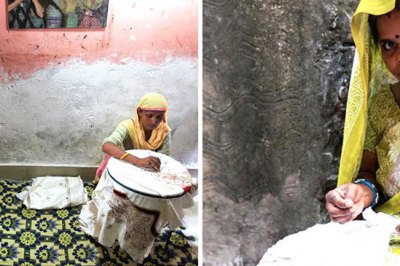Adding Color to the Shibori Craft Tradition in India

Hello from Jaipur, India! Here, I am joining Monica from Eileen Fisher, a Nest Artisan Advancement Steering Committee Partner, to observe and better understand the processes behind the traditional tie and dye technique of the Shibori artisans of this region.
The Shibori work is a two-part process that begins with the “treatment” of the fabric either by stitching or wrapping thread meticulously through and around the fabric. The second step involves dyeing the fabric as a means to create patterns and designs delineated by negative space where the thread has kept color at bay. Traditionally in Jaipur, treatment of the fabric is performed by women who work from their homes – in fact, there is a network of thousands of women who do this scrupulous work in Jaipur. To learn more aboutEileen Fisher’s work with Shibori artisans, I suggest going “behind the label” on the Eileen Fisher website.
In addition to speaking with the artisans about possible ways to improve their quality control processes, it has been both enlightening and inspiring to spend time with Monica from Eileen Fisher who is partnering with SEWA in efforts to help many of the women performing Shibori to secure ID cards and access to government assistance programs. This is great and important work.
Signing off from Jaipur,
Sara
Sara Otto is Nest’s Director of Artisan Programming. These are her photos and her words.